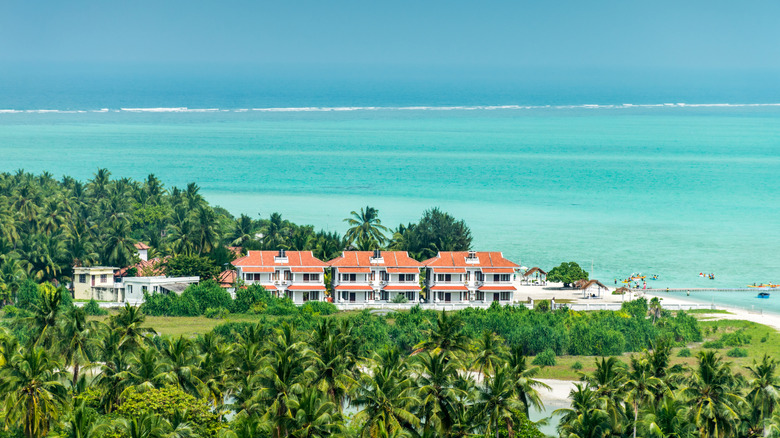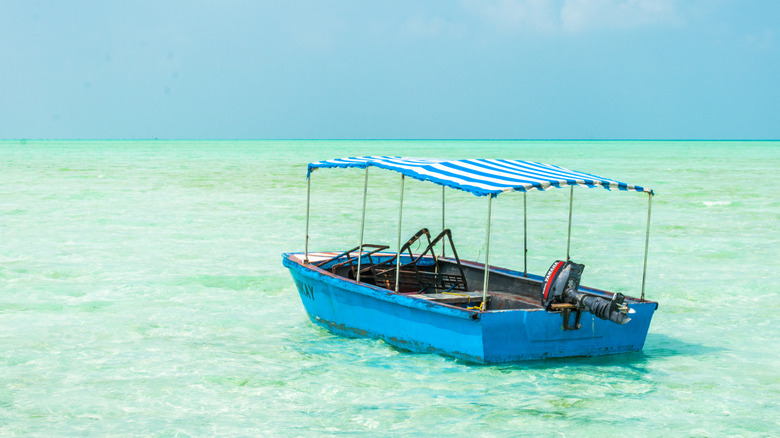In the southernmost reaches of the Lakshadweep archipelago lies Minicoy Island, also known as Maliku, a tranquil haven that remains largely untouched by mass tourism. Remote islands aren’t uncommon in India, such as the Andamans, India’s relaxing islands that are a mysterious world of white sand beaches and dreamy sunrises. But Minicoy one is one of India’s best-kept secrets. Minicoy Island only has around 10,000 inhabitants and is not even 2,000 square miles wide, but locals have preserved its unique culture and pristine environment. It’s the perfect destination for those looking for privacy in a tropical paradise.
Its main attraction is Thundi Beach, named one of the best islands in India by CNN. Its crystalline turquoise waters and colorful coral reefs offer an immersive underwater experience for both amateur and experienced snorkelers and divers. Some of the species that will swim by you are tuna, leaffish, jackfish, mantas, octopus, and multiple types of sharks. Pedal boats, kayaks, and sailboats are also provided for hire. This is one of the twelve beaches in India with the prestigious Blue Flag certification, an award by the Foundation for Environmental Education (FEE) that recognizes its pristine condition, clean waters, and commitment to environmental management.
A visit to the island isn’t complete without exploring the Minicoy Lighthouse, a 162-feet tall (49.5 meters) structure built in 1885 during the British era, which tourists climb for the best views of the Arabian Sea. Tours can also take you to the villages, a tuna canning factory, and coconut groves.
Culture, conservation, and sustainable tourism at Minicoy Island
The community’s commitment to sustainable tourism is clear in the island’s untouched beauty. The residents are actively involved in preserving their environment and cultural heritage, ensuring that tourism development aligns with ecological and social values. The Centre for Action Research on Environment Science and Society works with Minicoyans to revive traditional methods of protecting the reefs and lagoon. Island leaders have committed to creating a no-take protected area for at least 20 years, which means that the removal or destruction of natural and cultural resources is strictly prohibited here. Visitors are encouraged to respect local customs and participate in eco-friendly activities that support the island’s conservation efforts.
The Maliku Museum is a must-visit to get a glimpse of the island’s cultural and environmental heritage. It showcases a collection of artifacts that reflect Minicoyan’s historical and cultural evolution. Explore exhibits featuring traditional fishing tools, household items, and ancient relics that narrate the story of Minicoy’s past. The museum also serves as a venue for community events and educational workshops. What’s particularly fascinating about the Minicoyan cultural identity is how distinct it is from other parts of India. It has strong influences from Maldivian traditions, given that it is closer to the Maldives than to India itself. The museum, then, plays a crucial role in educating visitors about customs, language, and way of life.




